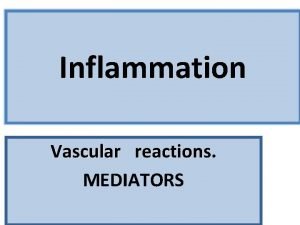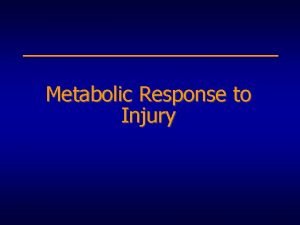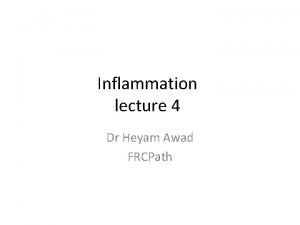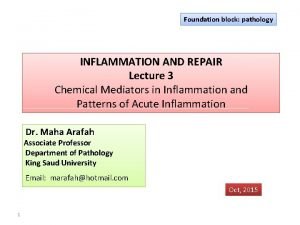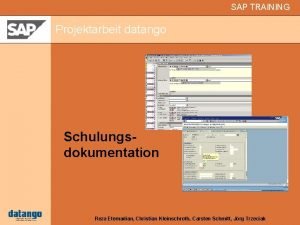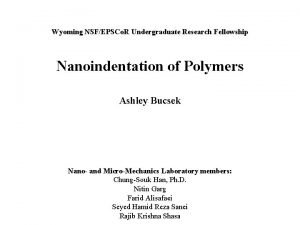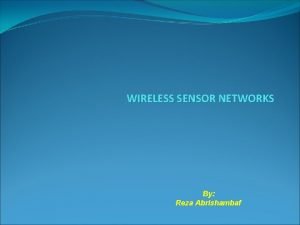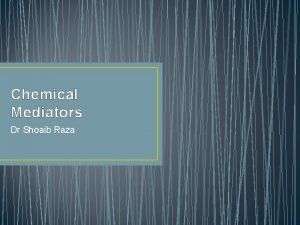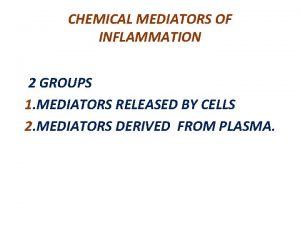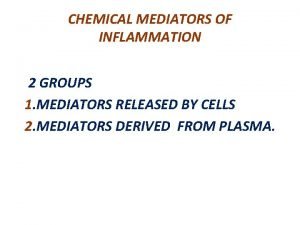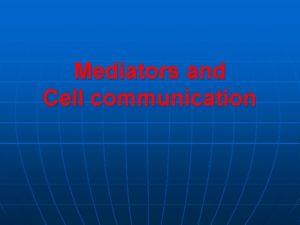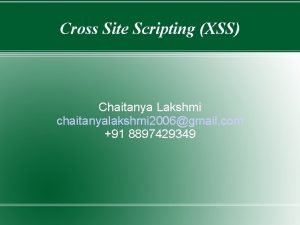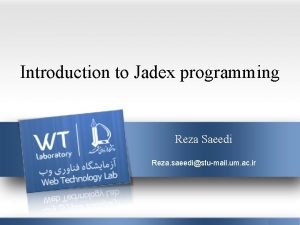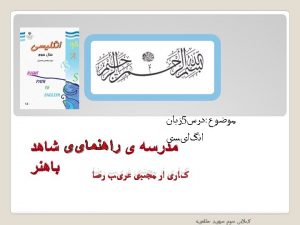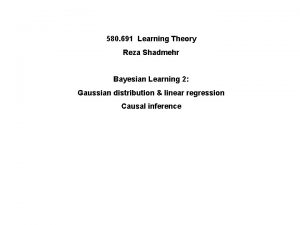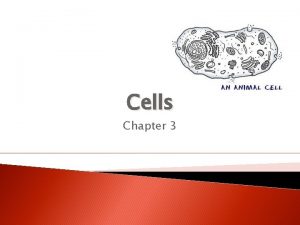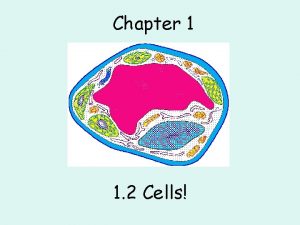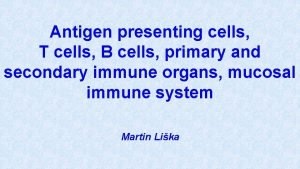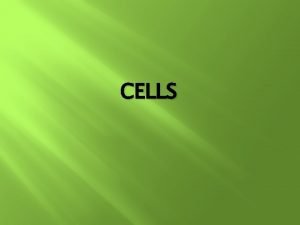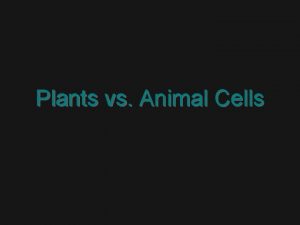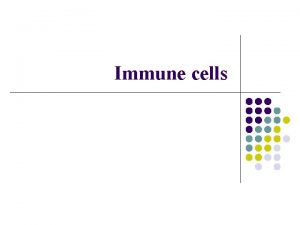Inflammaoty Cells Mediators dr reza 2006gmail com Learning































- Slides: 31

Inflammaoty Cells & Mediators dr. reza 2006@gmail. com

Learning objectives for PMDC in Inflm. Cells & Mediators: Important chemical mediators of inflammation. The pathway of Arachidonic Acid metabolism. The role of products of Arachidonic acid metabolism in inflammation. The mechanism for development of fever, with reference to exogenous and endogenous pyrogens. dr. reza 2006@gmail. com

Types of leukocyte (inflammatory cells): Leukocytes are out of blood vessels that are known as inflammatory cells. a. Neutrophils: Small phagocytic cell The two types of granules in the cytoplasm: Azurophil granules and specific granules. The first cells to appear in perivascular spaces are the neutrophils. Commonly seen in early stage of inflammation, and acute inflammation, and purulent inflammation. dr. reza 2006@gmail. com

b. Macrophages: Tissue macrophages are derived from blood monocytes that emigrate from blood vessels under influence of chemotactic factors. Commonly seen in later stage of inflammation, chronic inflammation, non-purulent inflammation, and viral, or protozoal, or fungal infections. And macrophages are also related to specific immune response. dr. reza 2006@gmail. com

dusty cell Langhan’s giant cell Macrophages could Formation foamy cell epithelioid cell heart failure cell Multinucleate giant-cells foreign-body giant cell dr. reza 2006@gmail. com

c. Eosinophilia Commonly seen in hypersensitivity reaction and human parasitological infections. d. Lymphocytes and plasma cells Commonly seen in virus infection and chronic inflammation. e. Basophilic and mast cell dr. reza 2006@gmail. com

Macr. M dr. reza 2006@gmail. com

In most acute inflammatory lesions, particularly due to pyogenic bacteria and immune complex, initiallyo o Neutrophils predominate during first 6 -24 hrs Monocyte predominate during 24 -48 hrs. Reason - ü More numerous in blood, ü Response more rapidly to chemokines ü Attach more firmly to adhesion molecules ü Activation of adhesion molecules and chemotactic agents in different phages of dr. reza 2006@gmail. com inflammation

Two main function of neutrophil and macrophage: Phagocytosis Release of leucocyte product dr. reza 2006@gmail. com

Exception in cellular exudation: • • • 1) Viral infection- Lymphocyte and macrophage accumulate, lymphocyte appear first 2) Typhoid fever- Macrophage, lymphocyte and plasma cells accumulate 3) Pseudomonas infection- neutrophil predominates for 2 -4 days 4) Chlamydia, rickettsia, mycoplasma, intracellular parasite and helminth infestation- Lymphocyte, macrophage accumulates 5) Ig. E mediated type I hypersensitivity reaction and infection by helminth- Eosinophil predominates dr. reza 2006@gmail. com

Leucocyte activation occur due to Increase in cytosolic Ca Activation of protein kinase C and phospholipase A 2 dr. reza 2006@gmail. com

Leucocyte activation A) Function responses: • Regulation of inflammatory reactions by cytokines • Modulation of leucocyte adhesion molecules by cytokines • Production of Arachidonic acid metabolites • Activation of oxidative burst • Degranulation and secretion of lysosomal enzyme B)Surface receptors • Seven transmembrane G-protein-coupled receptors • Toll-like receptors • Receptors for cytokines • Receptor for opsonins dr. reza 2006@gmail. com

dr. reza 2006@gmail. com

Release of leucocyte products: 1)lysosomal enzymes- mode of releasea) regurgitation during feeding b) Frustrated phagocytosis c) Cytotoxic release due to lysis of phagocyte, eg, by urate crystal d) Exocytosis 2) Rezactive oxygen intermediates(ROI) 3) Arachidonic acid metabolites dr. reza 2006@gmail. com

Macrophage • • • On extravascular tissuemonocyte→Macrophages are dominant cellular player in chronic inflammation. They are one of the components of mononuclear phagocytic system. Half Life in blood- 1 day Half Life in tissue- several months or years Activation in tissue by- TNFγ, bacterial endotoxin, other chemicals dr. reza 2006@gmail. com

Macrophages are activated by cytokines from immune-activated T cells (particularly IFNg) or by nonimmunologic stimuli such as endotoxin. The products made by activated macrophages that cause tissue injury and fibrosis are indicated. AA, arachidonic acid; PDGF, platelet-derived growth factor; FGF, fibroblast growth factor; TGFb, transforming growth factor b. dr. reza 2006@gmail. com

Function of activated macrophage Elimination of injurious agent, eg, microbs Infiltration of inflammatory cells by releasing chemotactic factors- LTB 4, chemokines Tissue destruction Fibrosis dr. reza 2006@gmail. com

Chronic inflammation in the lung, showing all three characteristic histologic features: (1) collection of chronic inflammatory cells (*), (2) destruction of parenchyma (normal alveoli are replaced by spaces lined by cuboidal epithelium, arrowheads), and (3) replacement by connective tissue (fibrosis, arrows) dr. reza 2006@gmail. com

Macrophage- Lymphocyte interaction occur in chronic inflammation- dr. reza 2006@gmail. com

Lymphocyte: These are mobilized in • Immune reaction, both antibody and cell mediated • Non immune mediated inflammation • T and B lymphocytes including memory cells migrate to inflammatory site • Plasma cells produce antibody against either to foreign antigen or altered tissue components dr. reza 2006@gmail. com

Eosinophil produces Histaminases which inactivates histamine Aryl sulphatase B which inactivates C 4, D 4, E 4 MBP(Major basic protein)- highly toxic to parasite & causes lysis of epithelial cell Eosinophil cationic protein- toxic to epithelial cell dr. reza 2006@gmail. com

Mast cell: Normally present in connective tissue, adjacent to blood vessel Degranulation and release of histamine occur Activated by Ig. E antibodies during anaphylactic reaction & helminthic infection dr. reza 2006@gmail. com

dr. reza 2006@gmail. com

dr. reza 2006@gmail. com

dr. reza 2006@gmail. com

dr. reza 2006@gmail. com

dr. reza 2006@gmail. com

Chemoactractants: Chemotactic agents for Neutrophils: Bacterial peptide & lipids, C 5 a, LTB 4, IL-8 Chemotactic agents for Monocyte: Bacterial peptide & lipids, C 5 a, LTB 4, MCP-1, MCP 1 , 1β, IL-1, TNF, kallikrein, PDGF Chemotactic agents for Eosinophil: C 5 a, LTB 4, ECF, PGD 2, eotoxin dr. reza 2006@gmail. com

Chemotaxis, leukocyte adhesion Leukotriene B 4 , HETE, lipoxins • Increased vascular permeability Leukotrienes C 4 , D 4 , E 4 • Vasodilation PGI 2 , PGE 1 , PGE 2 , PGD 2 • Vasoconstriction Thromboxane A 2 , leukotrienes C 4 , D 4 , E 4 • dr. reza 2006@gmail. com

• Histamine and serotonin -----Mast cells, platelets • Bradykinin ------------Plasma substrate ----------Pain • • C 3 a --------Plasma protein via liver ------- Opsonic fragment (C 3 b) C 5 a-------- Macrophages---------Leukocyte adhesion, activation • Prostaglandins ------Mast cells-------- - Vasodilation, pain, fever • Leukotriene B 4 ------- Leukocytes -------Leukocyte adhesion, activation Leukotriene C 4 , D 4 , E 4 ---- Leukocytes, mast cells ----Bronchoconstriction, vasoconstriction • dr. reza 2006@gmail. com

Oxygen metabolites ---Leukocytes ---- - Endothelial damage, tissue damage PAF -------Leukocytes, mast cells-----------Bronchoconstriction, leukocyte priming IL-1 and TNF ------Macrophages, other ------Acute-phase reactions, endothelial activation Chemokines ------Leukocyte, others - ---------Leukocyte activation dr. reza 2006@gmail. com
 Bài thơ mẹ đi làm từ sáng sớm
Bài thơ mẹ đi làm từ sáng sớm Cơm
Cơm Mediators of inflammation
Mediators of inflammation Metabolic response to injury
Metabolic response to injury Peer mediators definition
Peer mediators definition Pa council of mediators
Pa council of mediators Chemical mediators of inflammation
Chemical mediators of inflammation Mediators of inflammation
Mediators of inflammation Waters view with open mouth
Waters view with open mouth Tubular lumen
Tubular lumen Thyroid gland
Thyroid gland Gametes vs somatic cells
Gametes vs somatic cells Somatic vs germ cells
Somatic vs germ cells Red blood cells and white blood cells difference
Red blood cells and white blood cells difference Eukaryotic vs prokaryotic cell
Eukaryotic vs prokaryotic cell Plant cell vs animal cell venn diagram
Plant cell vs animal cell venn diagram Prokaryotic cells vs eukaryotic cells venn diagram
Prokaryotic cells vs eukaryotic cells venn diagram Organelle trail
Organelle trail Masses of cells form and steal nutrients from healthy cells
Masses of cells form and steal nutrients from healthy cells Label
Label 4 types of eukaryotic cells
4 types of eukaryotic cells Prokaryotic cells vs eukaryotic cells
Prokaryotic cells vs eukaryotic cells Nondisjunction in meiosis
Nondisjunction in meiosis Cells and life lesson 1 answer key
Cells and life lesson 1 answer key Cuadro comparativo e-learning b-learning m-learning
Cuadro comparativo e-learning b-learning m-learning Reza etemadian
Reza etemadian Santo rosario al corazón de jesús
Santo rosario al corazón de jesús Dios te salve maria santisima esposa
Dios te salve maria santisima esposa Seyed hamid reza sanei
Seyed hamid reza sanei Reza abrishambaf
Reza abrishambaf I’m sorry that i didn’t finish my homework last night.
I’m sorry that i didn’t finish my homework last night. Dr reza nasr gynecologist
Dr reza nasr gynecologist


